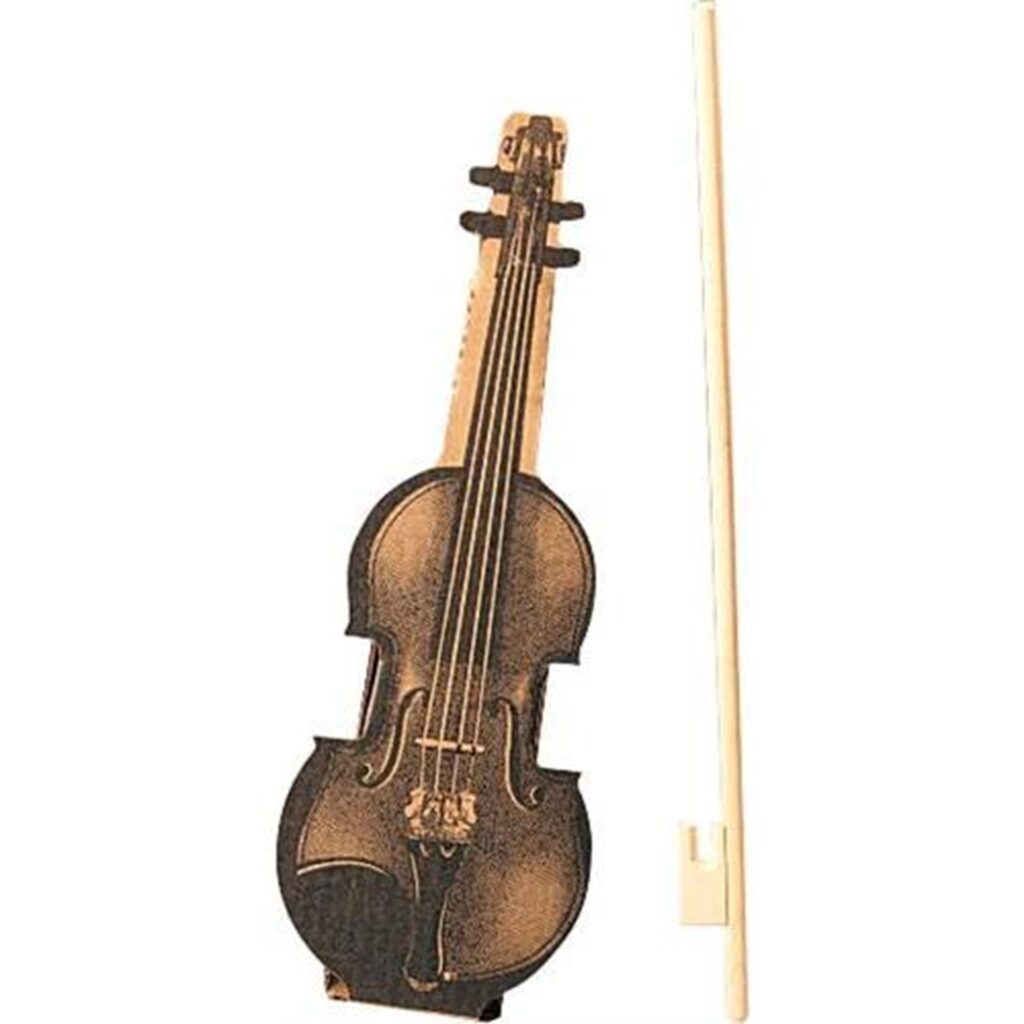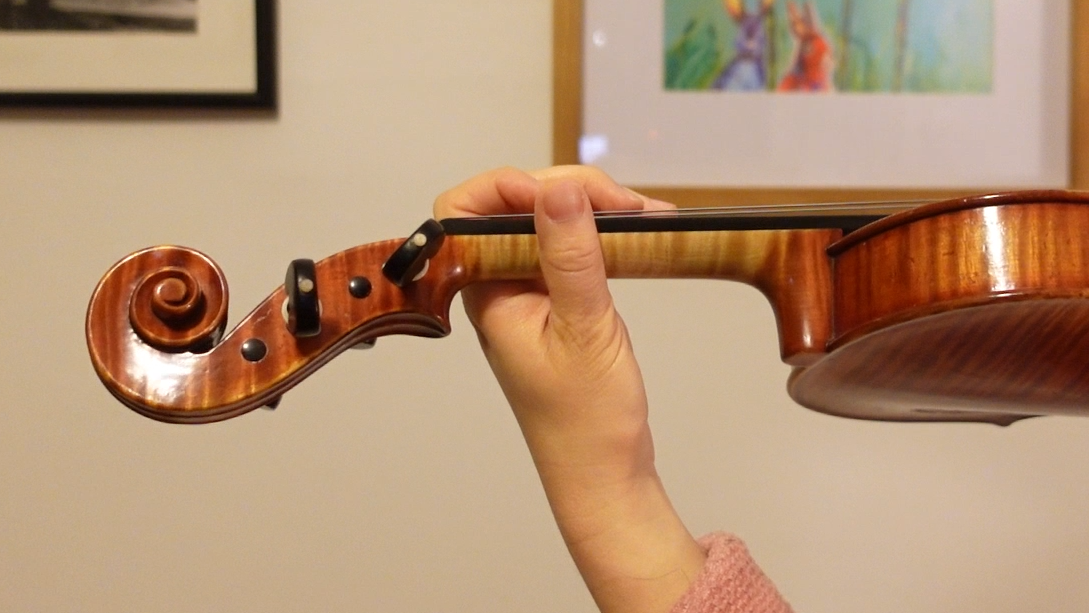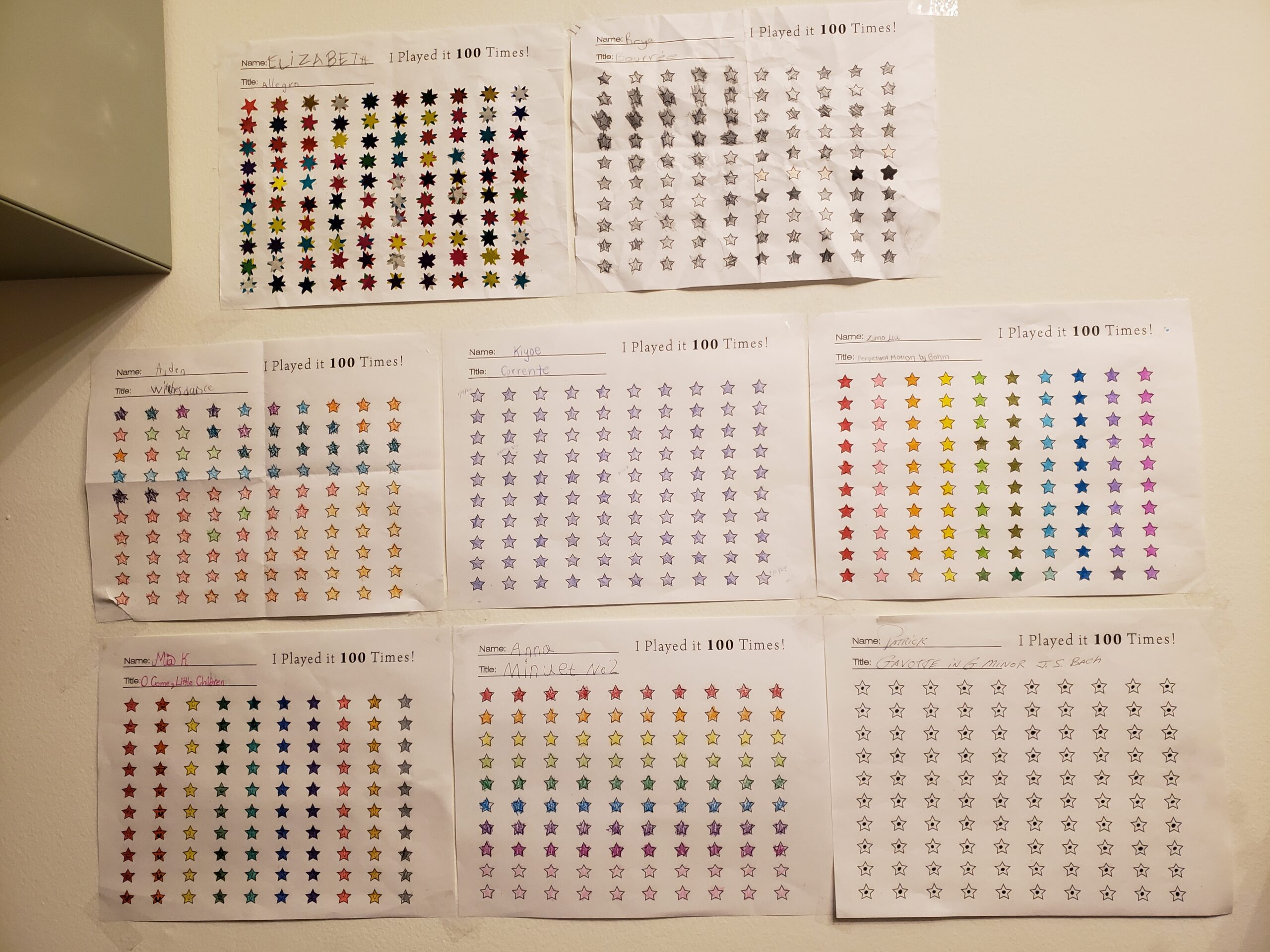When parents contact me to sign their children up for violin lessons, one of the first things I explain is that their child will be starting lessons with a cardboard box violin rather than a real violin. This often comes as a surprise for parents who have never heard of a box violin. Understandably, some of them wonder why they can’t just skip this step and start learning “real” violin at the first lesson.
Using a “real” violin in the first lesson is not recommended for a couple of reasons. First, there is too much risk for damaging the instrument because the student has not yet learned how to properly hold it or take care of it. Second, the ability to create sound on the instrument is too tempting, and students will inevitably develop poor technique as they try to play the violin at home before learning how to properly hold it.
Having only a box violin in the first few lessons allows a young student to learn all the basic techniques of holding the violin and bow, develop good habits of taking care of the violin, and memorize the names of the parts of the violin. The box violin allows students to focus completely on their technique without the distraction of making sound. Once the student forms good technical habits with the box violin, they are well-prepared to create a good tone on a real violin.
Box violins save real violins from being damaged.
When I present a box violin to a student at the first lesson, I effectively minimize distractions and save real violins from being destroyed. Even with a box violin and bow that does not produce any sound, a student can learn all the basic violin techniques such as the violin hold, bow hold, and bow movement. During these box violin lessons, I also teach ear-training and other important musical concepts. These lessons set a foundation for a child to successfully transition to a real violin, already knowing key technical and musical skills.
I prefer to use the Cherub Box Violin and Bow for my new students. Cherub Box Violins have the realistic shape and size of 1/10th violin, perfect for most beginner students under the age of 10. An illustration on the cardboard shows the parts of the violin. Additionally, the bow resembles a real bow with a frog, minus the horsehair. These sturdy Cherub Violins are also cost-effective for me as a teacher, as I preemptively let the student and parent know that they may return the box violin to me once they are done with it so that another child may use it.
A typical lesson with a box violin may cover the following:
- Learning lesson etiquette, including taking a bow at the beginning and end of the lesson and listening to directions
- Memorizing the part names of the violin and bow
- How to take care of the instrument, including not touching the horsehair
- Practicing the “five steps” from rest position to playing position and holding the violin with good posture
- Practicing good bow holds and the “Twinkle A” rhythm on the shoulder
- Basic ear training (identifying high and low notes, scales and arpeggios)
- Singing the lyrics to pre-twinkle songs
- Educating the parent about their role as a home teacher and giving them an opportunity to voice any questions or concerns
Here is my set of criteria that I expect each student to pass before they are ready to graduate to a “real” violin.
The student must be able to:
- Stand in rest position and take a nice bow with the box violin.
- Demonstrate the ability to go from rest position to playing position using 5 steps.
- Hold the violin with good posture with hands on the belly for the duration of a Twinkle variation (played by me).
- Do ten consecutive relaxed bow-holds in a row.
- Do ten consecutive Twinkle-A rhythms in a row on the left shoulder with a good bow hold.
How long does a child need to spend with a box violin?
It depends on the child’s age, focus, motor skills, and amount of time spent practicing at home. At this stage, there is no pressure to move quickly. I allow students to spend as much time as they need with the box violin without judgement of how quickly, or slowly they learn. The priority is to develop lasting good habits with the violin that will benefit the student throughout the rest of his or her violin education. I’ve had students spend anywhere between two and ten weeks with the box violin before successfully graduating to a real violin.
Once my students have passed my criteria to graduate to the real violin, the next step is Pre-Twinkles. Read How to Cultivate Strong Violin Technique with Pre-Twinkles to see how I approach the next chapter in a student’s violin education.
Questions or Comments?
Drop me a message.
Latest Posts from the Blog
How To Overcome Left-hand Pain While Playing Violin
Left-hand and arm pain while playing violin is a common challenge for students. As a violin teacher,…
Surprising Takeaways From The 100 Star Practice Challenge
At the beginning of 2024, I had an idea to motivate my students back into practicing. Most of my stu…
5 New Strategies For Violin Neck and Shoulder Pain
I have previously written articles about ways to relieve shoulder pain caused by playing the violin,…




Pingback: How To Cultivate Strong Violin Technique With Pre-Twinkle Pieces (My 5 Favorites) - Kiyoe Matsuura Violin